Tadoba National Park – Complete Travel Guide
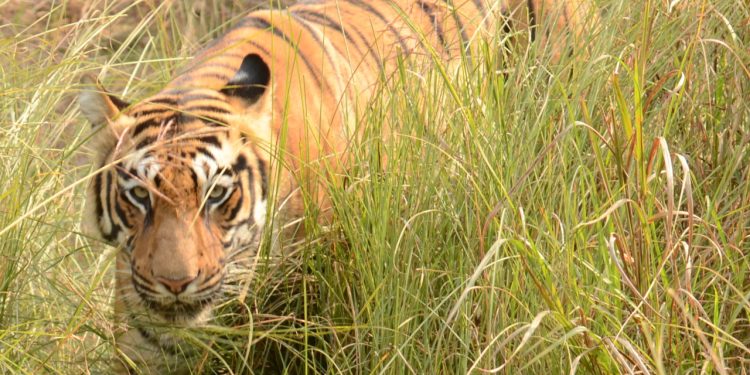
“Shhh..let the jungle reveal herself. Whispers echo in the air as the excitement oozes out. “Don’t take the name of you-know-who… Sitting in the open jeep with blankets wrapped around us, we rub our hands in glee and wait quietly for the Khutwanda Gate of the Tadoba National Park to open. Oh, where are the ghost trees? They are my lucky charm..” The dense fog lifts, and the first rays of the sun light up the path in front of me casting a golden hue on the forest floor of the Tadoba Andhari Tiger Reserve. As the dappled sunlight shines through the lattice of leaves, creating a mysterious pattern, it feels like it has woken up the spirit of the forest, which dispels the fog in minutes. I see the pristine woodlands in all their glory. The mahua and teak trees are like sentinels, standing tall as towers accompanied by groves of palash, tendu, ain, bija, dauda among many others.
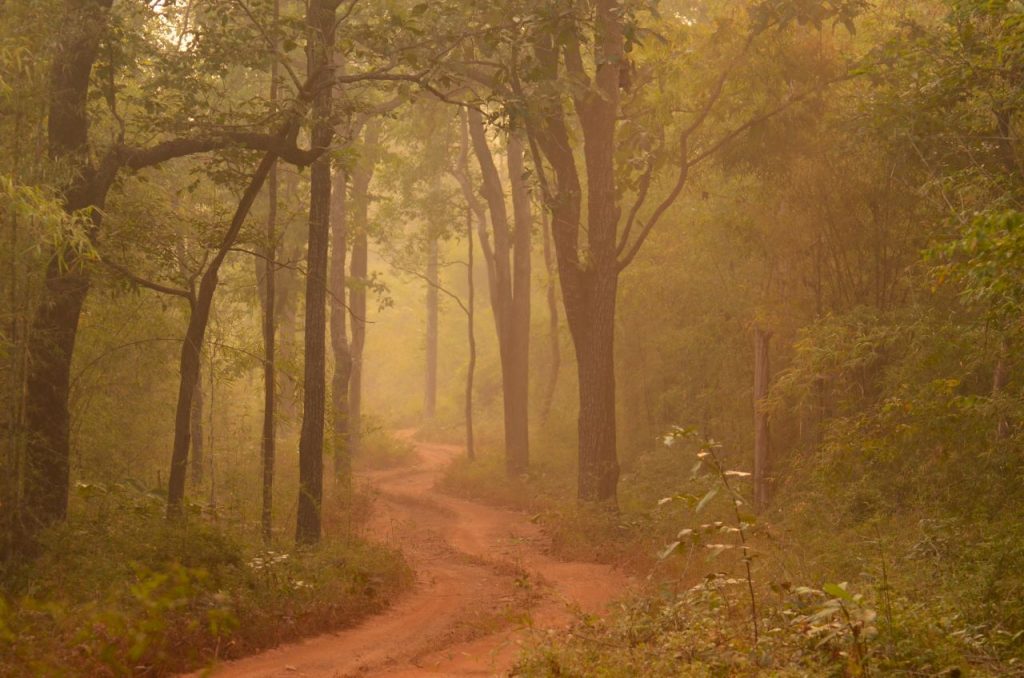
The teak brown forest is a woody haven while the light green shades of the bamboo forest glow in the morning sun. As the jeep cuts through the dense forest, the branches snap around us, while the sprawling trees pose like citadels along the shady groves of bamboo. The game of hide and seek begins in this tropical and subtropical dry broadleaf and dry-deciduous forest. Drumming woodpeckers create cracks in the wrinkled bark. A sleepy pair of Indian scops owls (collared scops owls) wink at us. The wind cuts through the crispy bamboo leaves. The forest hums with life with the melody of the birds while the rustling foliage adds to the music. . The sun shines through the cracks as we pause for a moment to take in the scene. Rustling foliage adds to the music of the birds while the denizens of the forest wake up to another new day in the Tadoba Andhari Tiger Reserve.
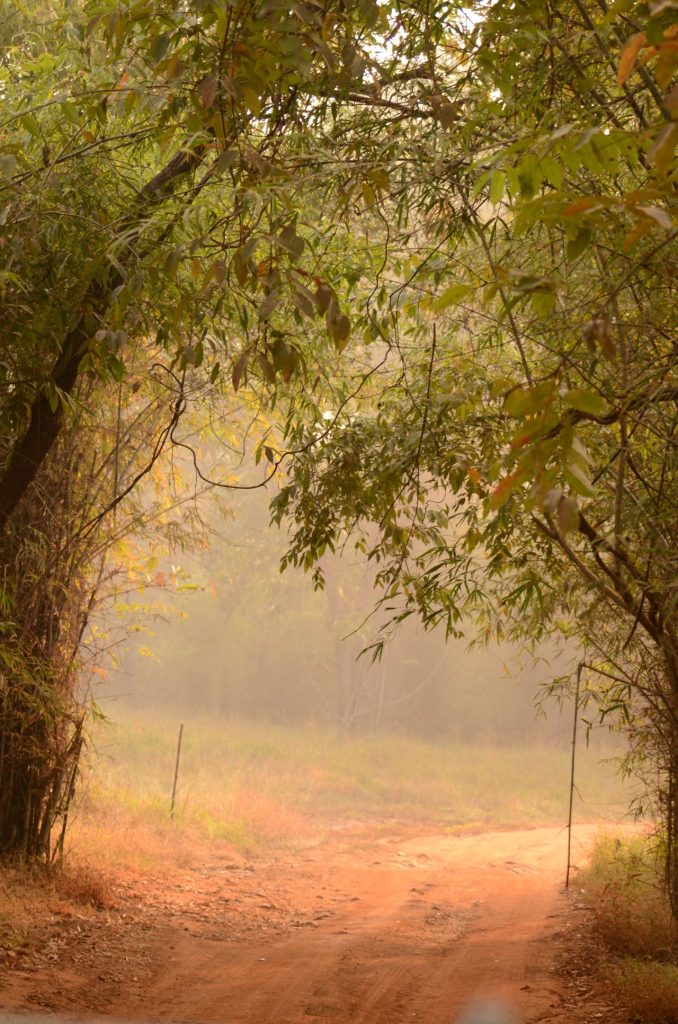
It’s my first time in Tadoba National Park and my second wildlife safari here, this time at the core zone through the Khutwanda Gate, and I am hoping to break the jinx of sighting a tiger in the wild. Perhaps I should have prayed to the tribal deity Taru or Tadoba after whom the national park has been named. According to the legends, he was once a tribal chief who is been enshrined by the Tadoba lake. Some say he killed the fabled tiger, others say he was slain. However, it didn’t matter. All that I need now is some mystical power to draw the tiger out of his hideout right now. Tigers are worshipped as Waghoba and as I murmur a little prayer to the deified tiger, I hope for something more than just a bit of luck.

Meeting Roma , the tigress of Tadoba National Park
And the safari at Tadoba National Park begins on a bumpy dusty note as we crisscross winding roads, cutting through tracts of wilderness and squinting through clumps of bamboo and staring at woods, and losing ourselves in a dense canopy of trees. The spotted deer sprint through the trees, the sambar poses for a while, and the langurs are playful but there is no sign of the tiger or the leopard.
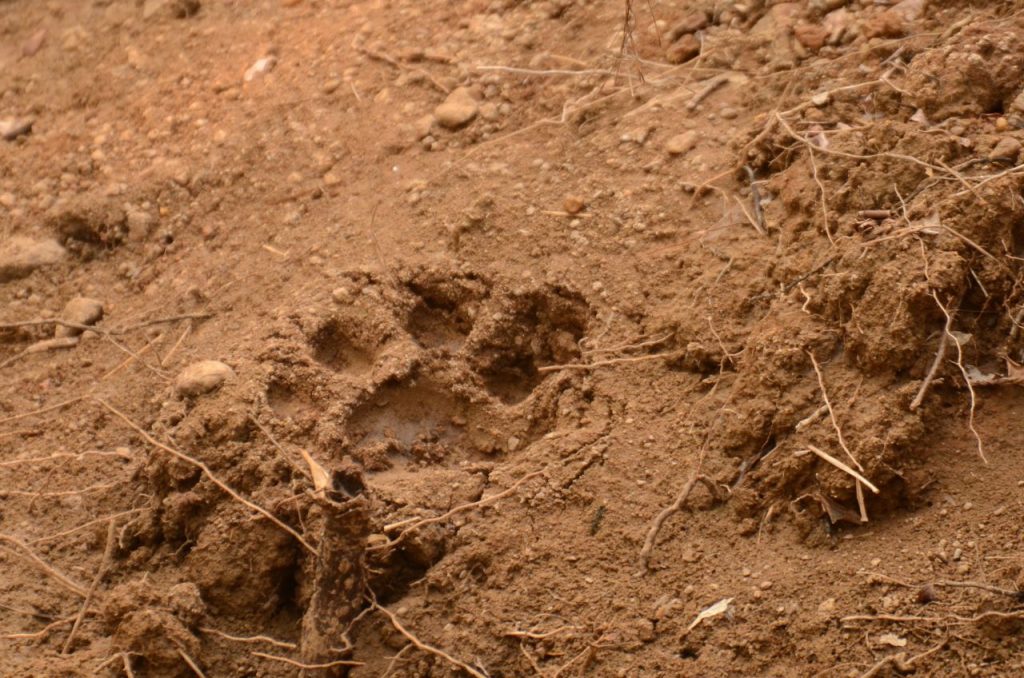
We had near misses in the previous safari and barring pugmarks and marks of claws on trees, the tigers remain elusive. But a safari is never over until it’s actually over they say and just as we were a few minutes away from the exit gate, we see a couple of jeeps parked a little distance away from the clumps of bushes. There is dead silence around us as people peer into the dense undergrowth with their cameras and binoculars. Curiously and quietly, I pick up my camera too and try to focus between the unkempt wild stalks of bamboo and tall grass, scanning the landscape for the elusive stripes. And then I see her, with her mouth wide open, yawning, sitting behind the clumps of bamboo, camouflaged well with the colours of the forest. “Roma” whispers my guide, introducing the majestic tigress to us, ” Daughter of Choti Tara, ”
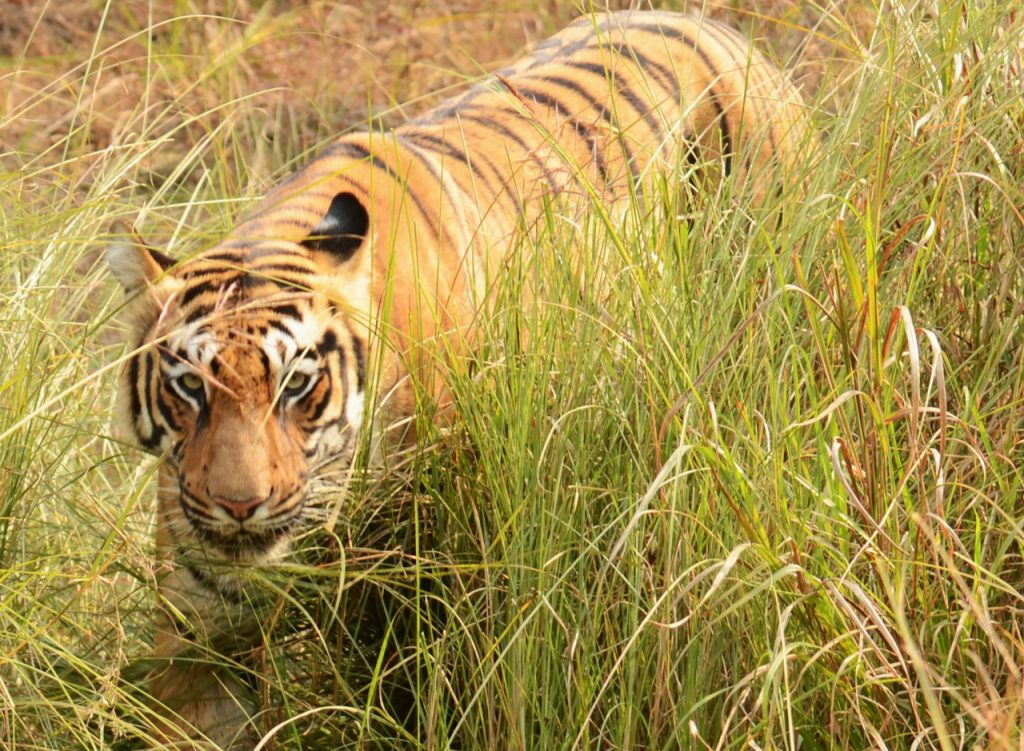
I am a mixed bag of hope and disappointment. Disappointed that the thicket of bushes and entangled grass is between her and us, covering her face as well, as she continues to lounge in the shrubbery. A sliver of hope however rises inside me, as I murmur a prayer to the enshrined deity of Waghoba ( Wagh means tiger and ba is a suffix that denotes respect ) in the Waghoba Eco Lodge where we were hosted. And as an answer to my prayer, she decides to gift us with a clear sighting.
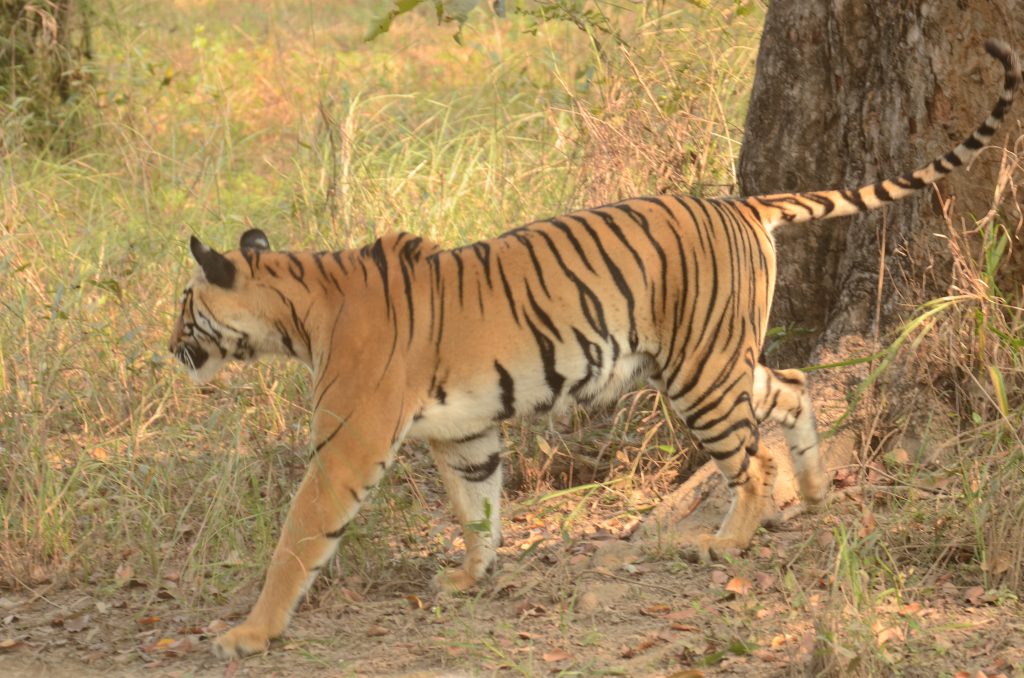
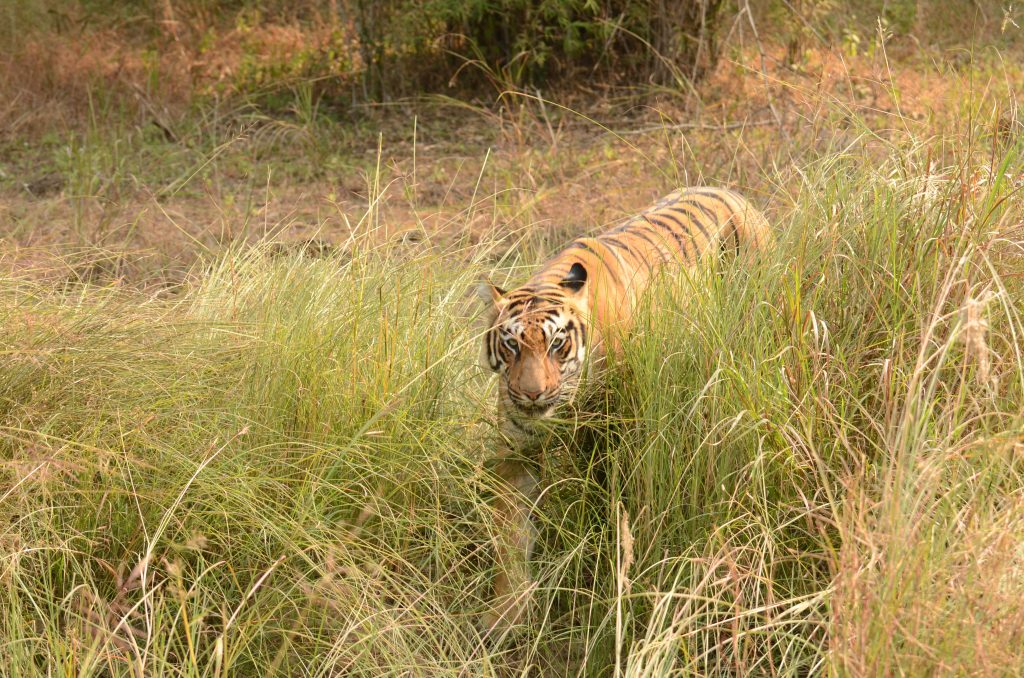
As the murmur of whispers slows down, she stands for a moment, seems to survey the spectators waiting on the road for her and then she strides majestically through the thicket into the road and like a diva, the showstopper that she is, walked right in front of the two jeeps facing us, amidst gasps and whispers. For a moment, I hold my breath as I see her, nonchalantly parading like a prima donna knowing very well the effect she is having on us, humans as we watch her silently in awe. And now I realize why the forest communities worship these majestic felines – they are indeed the gods and goddesses of the forest.
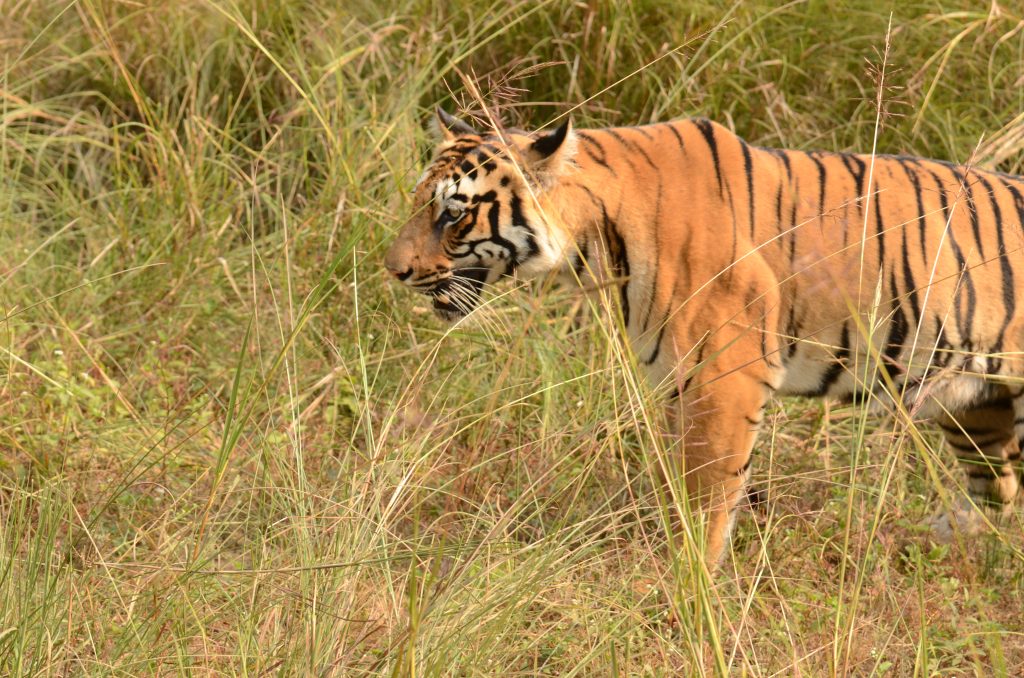
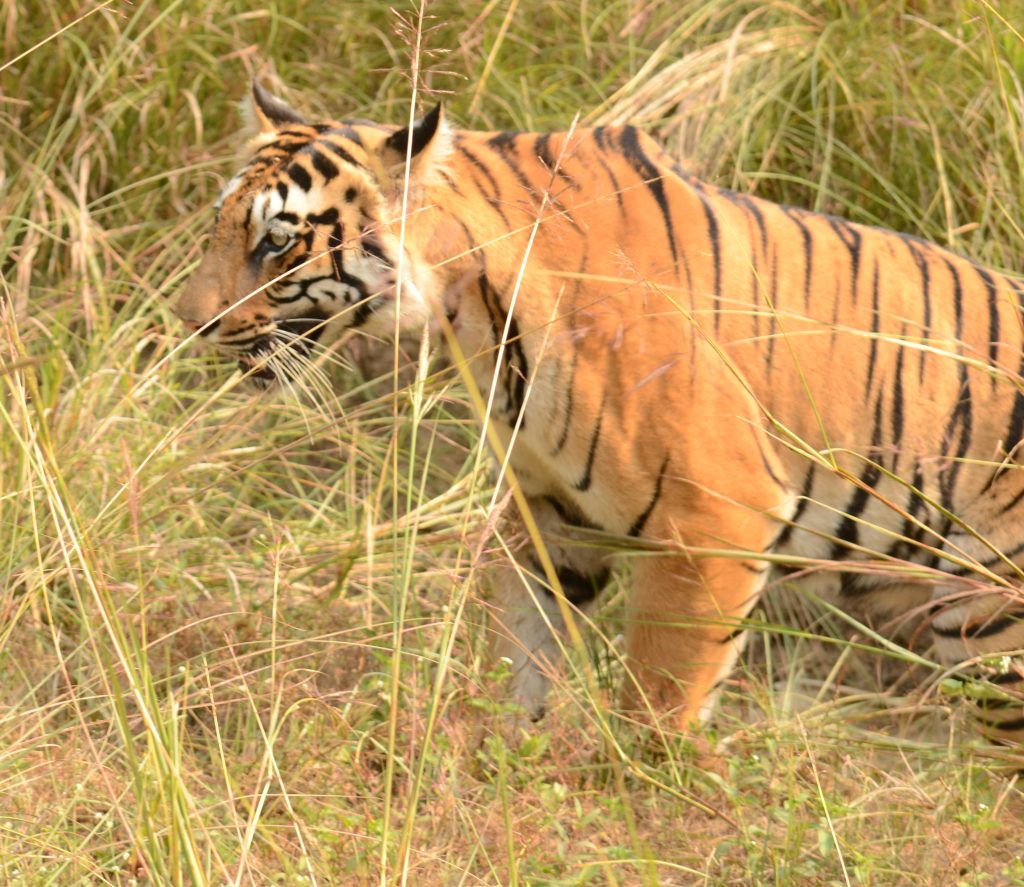
Tadoba National Park is one of the oldest and largest national parks in Maharashtra combined with Andhari Wildlife Sanctuary, it is over 1727 sq km and forms the Tadoba Andhari Tiger Reserve (TATR). While Tadoba takes its name from the tribal deity Taru, the river Andhari flows through the wildlife sanctuary giving it the name. Located in the Chandrapur District of Maharashtra, it is one of the oldest and largest national parks, having been established in 1955. Tadoba National Park also referred to as the “Real Land of the Tiger”, houses one of the largest populations of tigers besides leopards, dholes, sloth bears and their prey which include sambar, barking deer and chital, gaurs, and langurs.
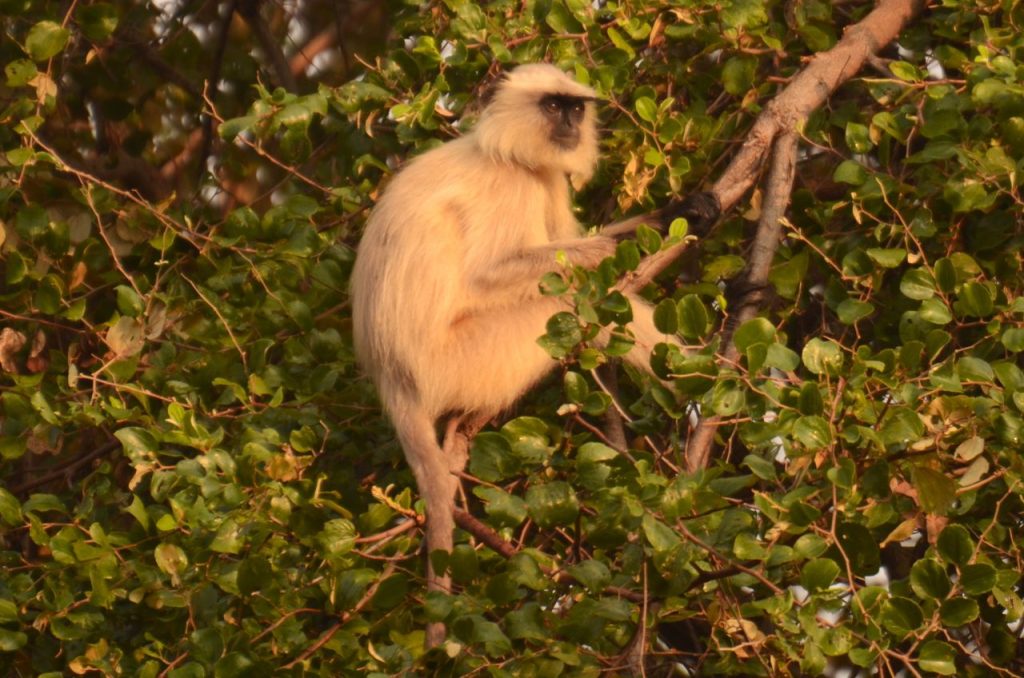
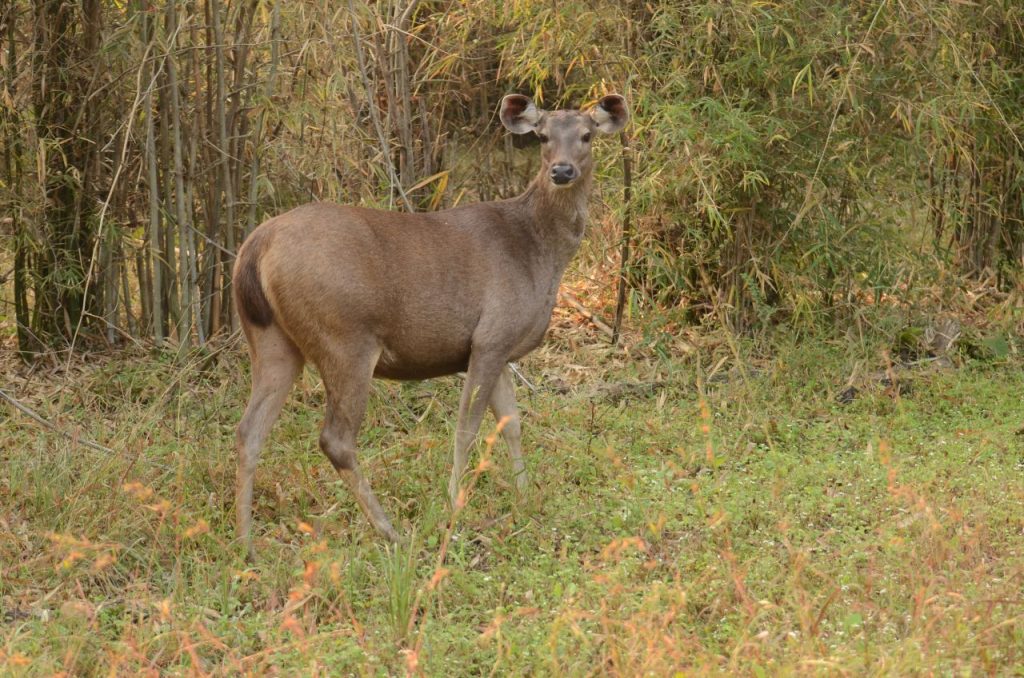
One of the richest ecosystems in terms of biodiversity, the dry deciduous forests and riparian habitat with dense teak woodlands and bamboo groves also has undulating hills with lush valleys, verdant meadows and grasslands and wetlands and reservoirs. The Tadoba Lake is a perennial waterhole that separates the core and buffer zones and extends up to the Irai Dam where you can even go boating and spot mugger crocodiles. It is in fact one of the favourite spots for birdwatchers and you can even spot tigers during a safari.
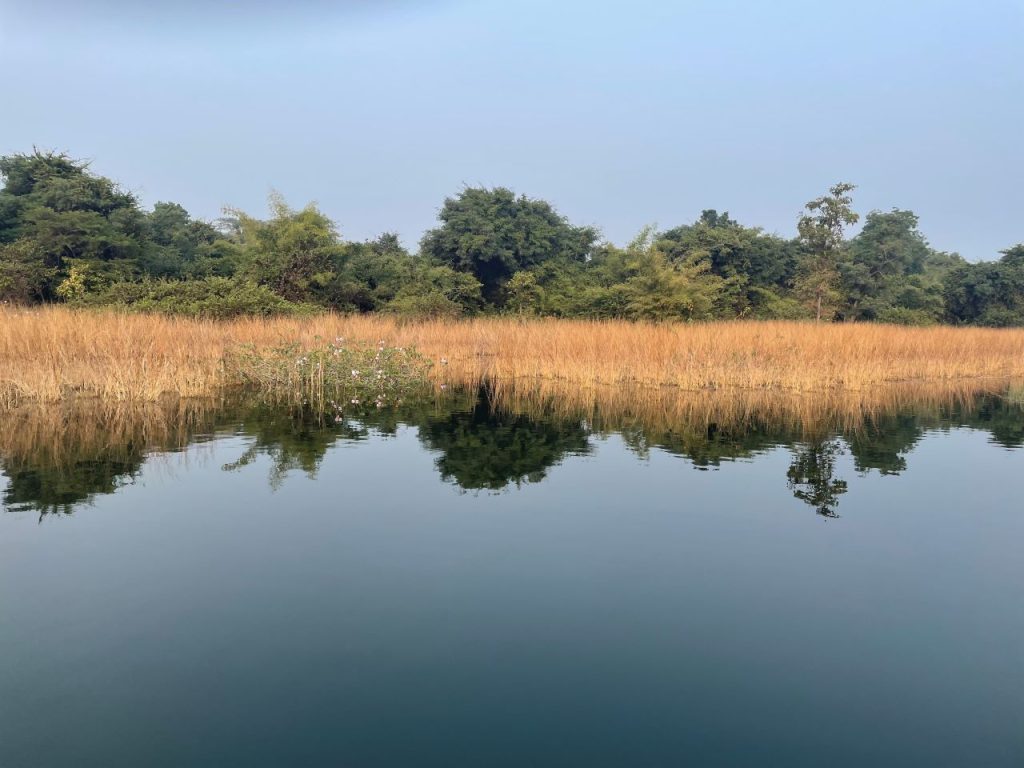
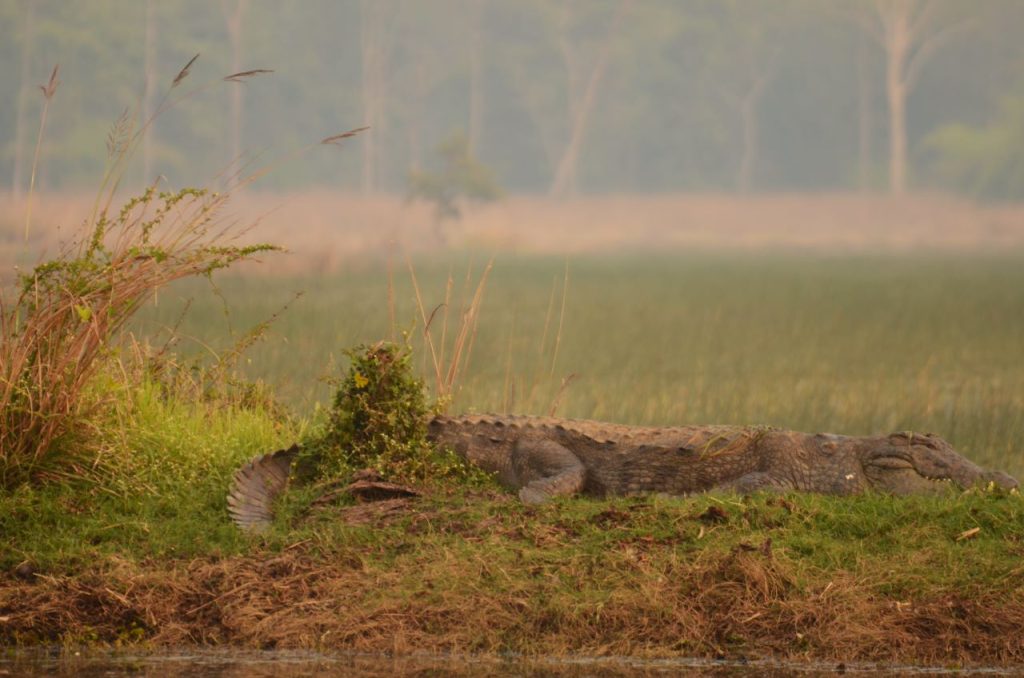
Historically the region was once ruled by the Gonds and even today the villages around the forests in the buffer zone are believed to be descendants of the royal tribes. During the colonial era, the shooting of tigers, except with a special permit was stopped in 1905 but hunting was stopped for all animals only in the 1930s. However it was only in the mid-70s that hunting was officially banned in the tiger reserve. In recent times, sustained conservation and support from local NGOs , forest departments and local communities have created a protected ecosystem for the flora and fauna, especially as a safe breeding ground for tigers.
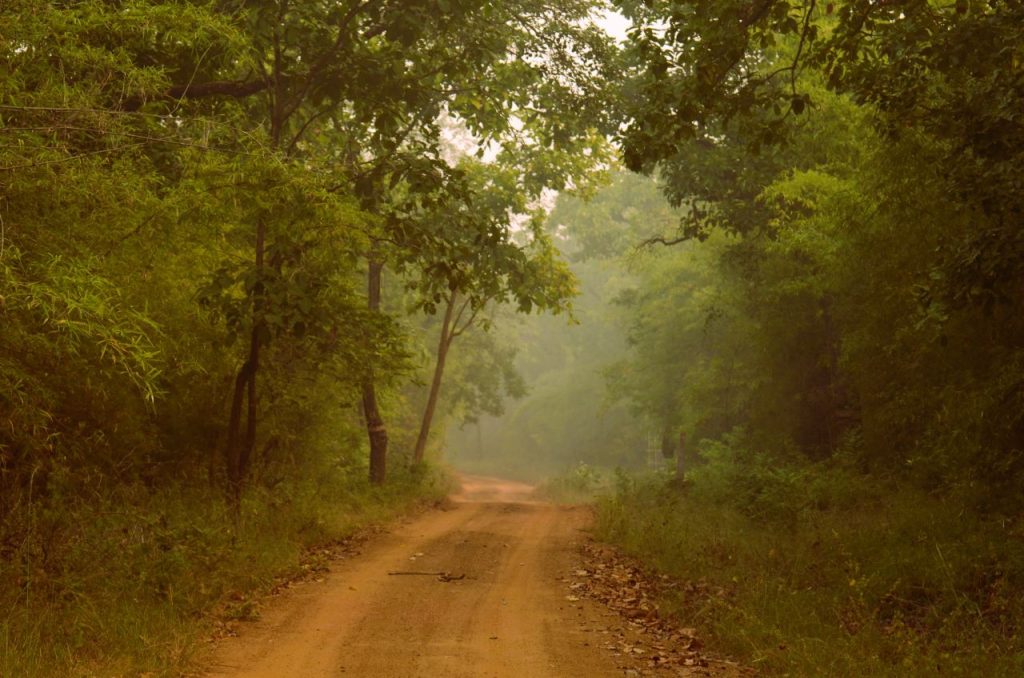
What is the Flora and Fauna of Tadoba National Park ?
One of the most pristine habitats, the dry deciduous forests with undulating hills and rugged cliffs, covered with dense woodlands, riverine valleys, grasslands, and wetlands are the haunt of 62 species of mammals, over 250 species of birds, 174 species of butterflies, and around 34 species of reptiles. The trees include teak, palash, mahua, ain, tendu, bera but its the bamboo that adds to the unique ecosystem.

As of the last census, it is believed that there are over a hundred tigers besides leopards including the exclusive black leopard is also amongst them. Besides the tiger and the leopard, wildlife includes sloth bears, wild dogs, jungle cat, langurs, jackals, foxes, wild pigs and gaurs besides chital, barking deer , honey badger, civet, chausingha, nilgai, and sambar.

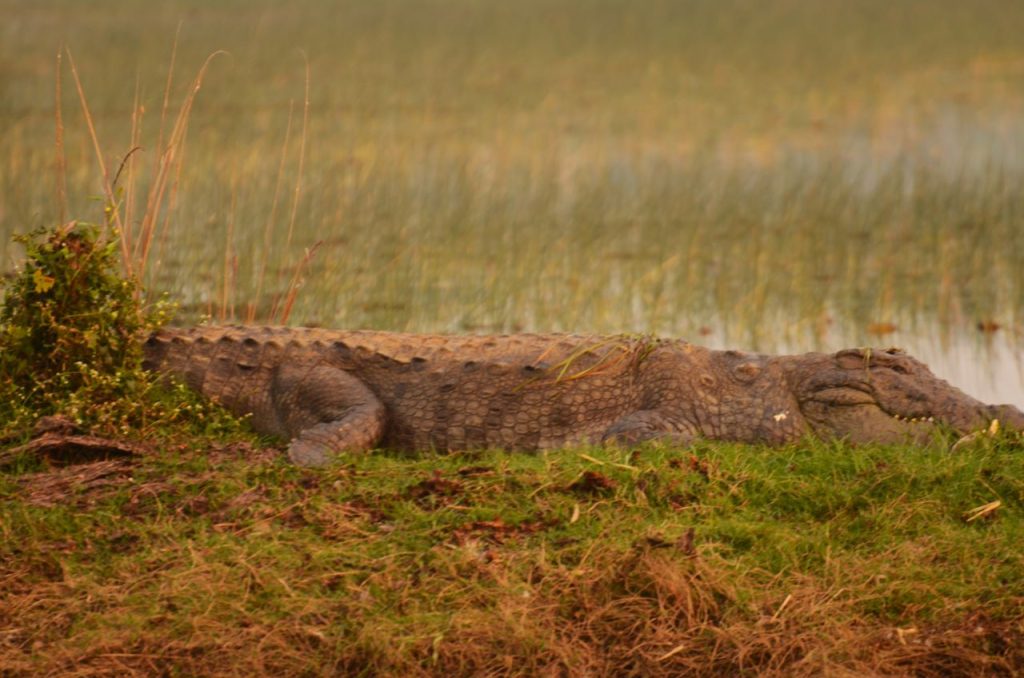
Tadoba Lake is a haunt for marsh crocodiles and water birds like lesser adjutant storks and black storks while there are several woodland species and raptors like changeable hawk eagle and grey-headed fish eagle, besides owls and nightjars and more nocturnal species as well. Tigress Maya and her cubs have also been frequently sighted at Tadoba Lake besides Blacky, the melanistic cubs. We didn’t sight either of them, although we did try a wild chase to no avail.
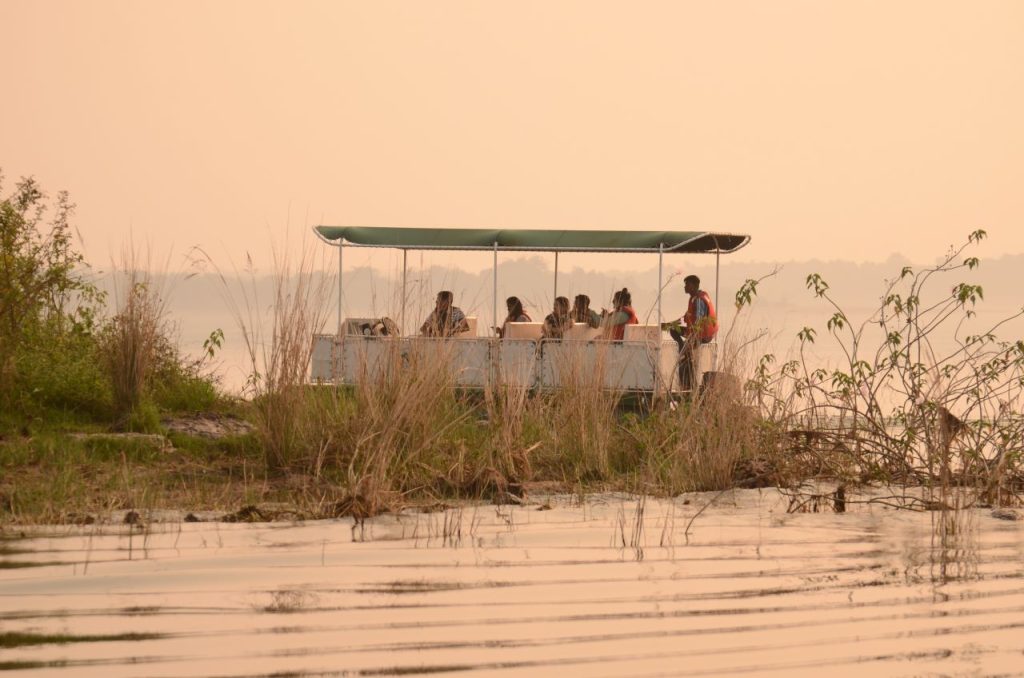
Gates and Zones – Which zone of Tadoba is best?
Tadoba National Park has three ranges – Tadoba North, Kolsa South, and Moharli between the two of them. Each range is divided into different zones and gates. The ranges, except for Kolsa are interconnected and during a safari, can be covered from any of the gates.
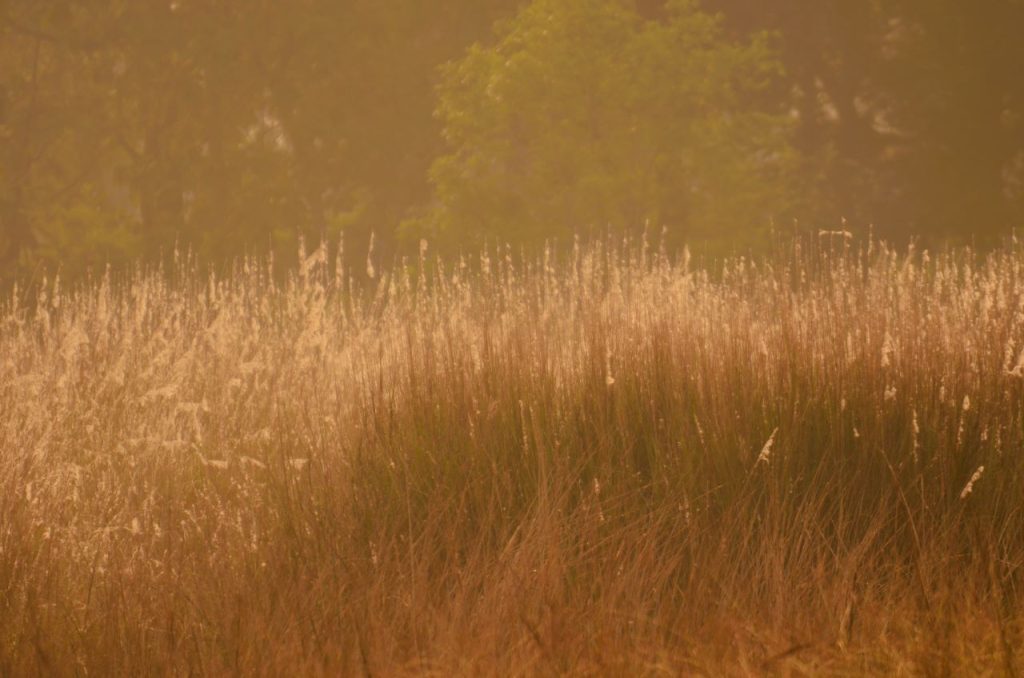
The core zone in Tadoba has six gates while the buffer zone has twelve gates. The six core gates are Moharli, Khutwanda, Kolara, Navegaon, Pangdi, and Zari Gates. We stayed in Waghoba Eco Lodge by Pugdundee Safaris which is located barely 15 kms from Khutwanda Gate, while Moharli was about 45 minutes away. There are twelve entry gates at the buffer zone and some of them include Agarzari, Devada- Adegaon, and Junona.
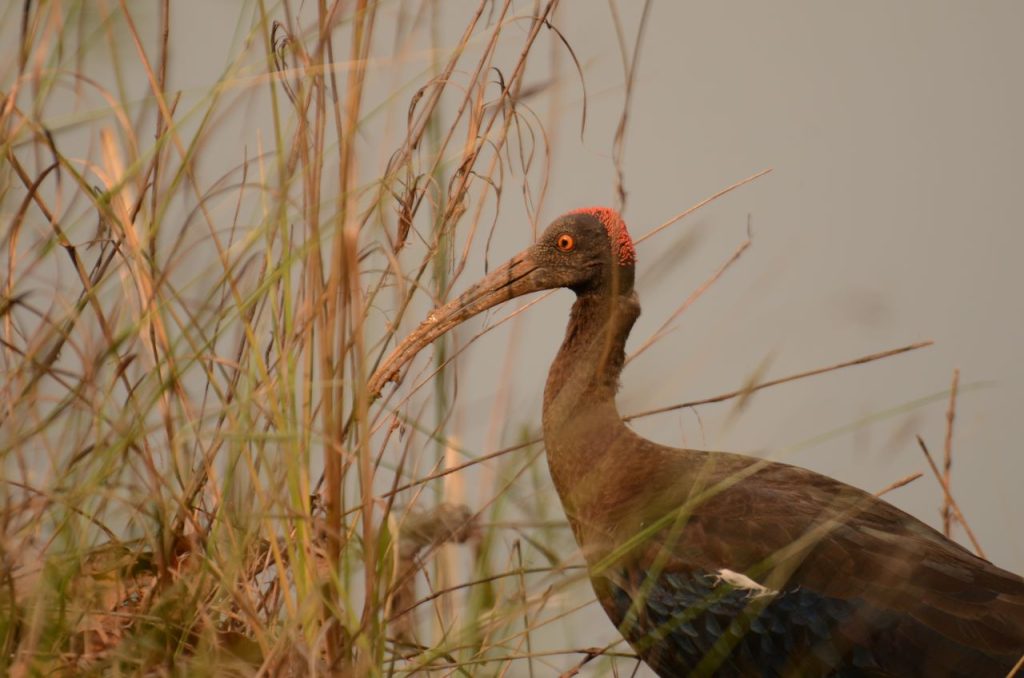
We did three safaris which were all in the Moharli zone where the core gates are in Khutwanda Gate and Moharli, and the buffer zone are Devada Adegaon, Agarzari, and Junona. Our core safari was through the Khutwanda Gate, Buffer through Devada Adegao and night safari through Junona. Although Moharli Gate is one of the oldest, Khutwanda is known to be generous with the sightings and it did not disappoint us, as we had a tete-a-tete with Roma, the tigress here for a good ten minutes.
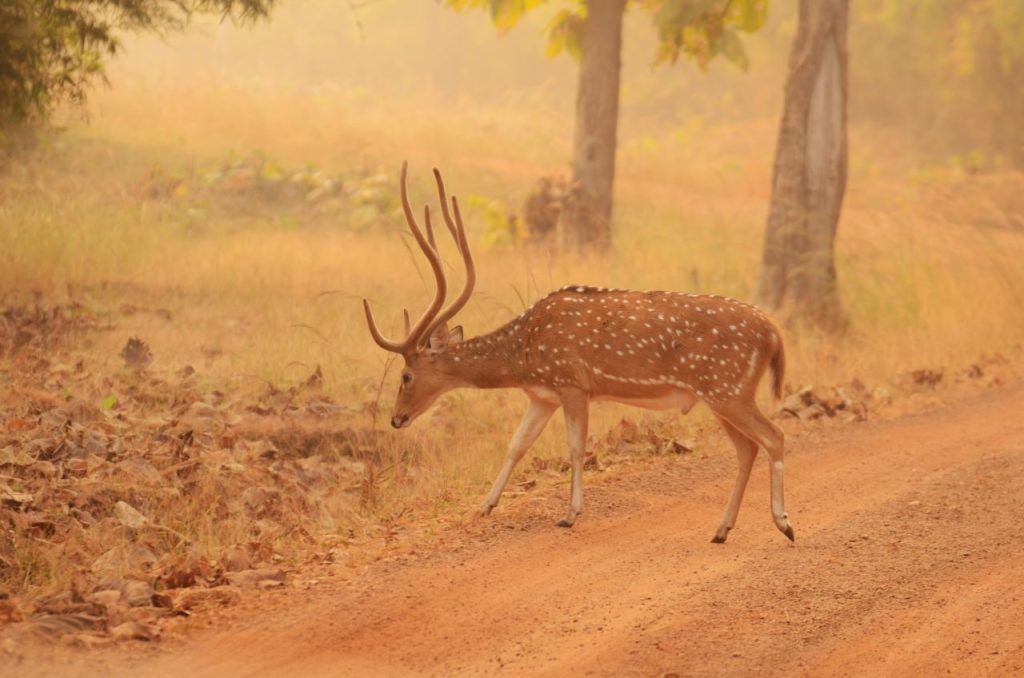
How can I book Tadoba Safari Tickets?
Although Waghoba Eco Lodge from Pugdundee and other resorts and lodges will book your safaris, you can also book online and get your permit. Rates vary based on weekdays and weekends, core or buffer zones, and a day or night safaris. A guide and driver will accompany you and mobile phones are not allowed. There are separate rates for Indian and foreign tourists. Rates also differ based on whether you book in advance between 60-120 days or closer between 4-59 days. Ironically the latter is cheaper but it’s subject to availability as there are a limited number of jeeps allowed at any given point of time in any zone. You can book offline only for buffer and night safaris and that is also subject to availability. For more details regarding time, costs, and permits, please visit http://tadoba.org.in/wildlife-safaris/
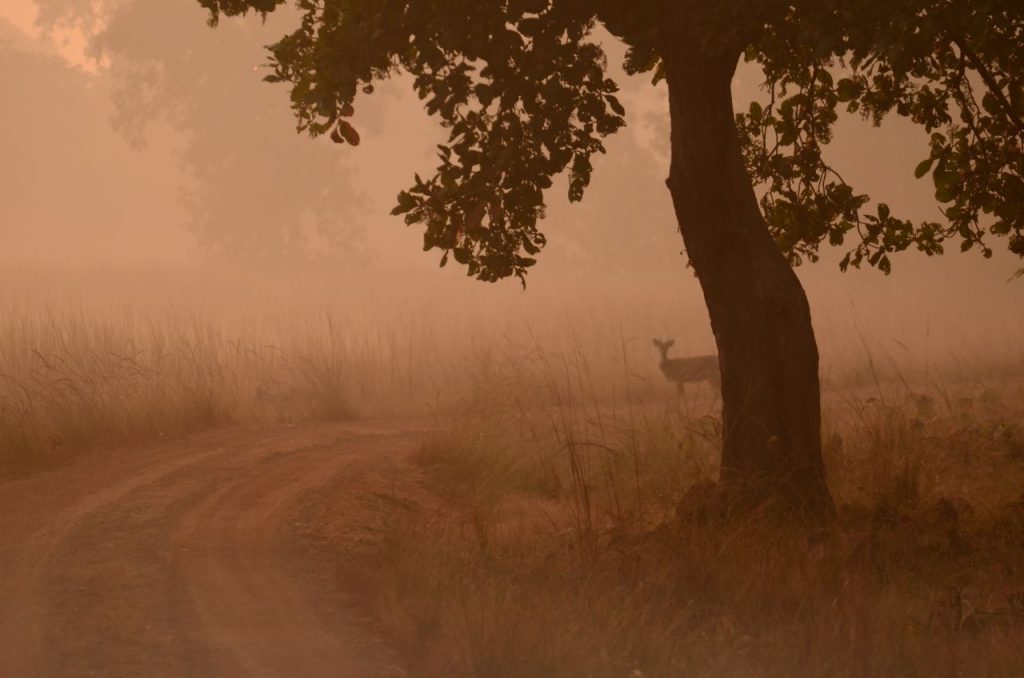
What are the various activities at Tadoba National Park ?
You can go for a morning, evening, and night safari here either in the core or buffer zones of the Tadoba Andhari Tiger Reserve. The sightings in the buffer zone are equally generous as the core zone and the night safari packs more adventure especially if you love exploring the forest in the dead of the night. We even saw a sloth bear as well.
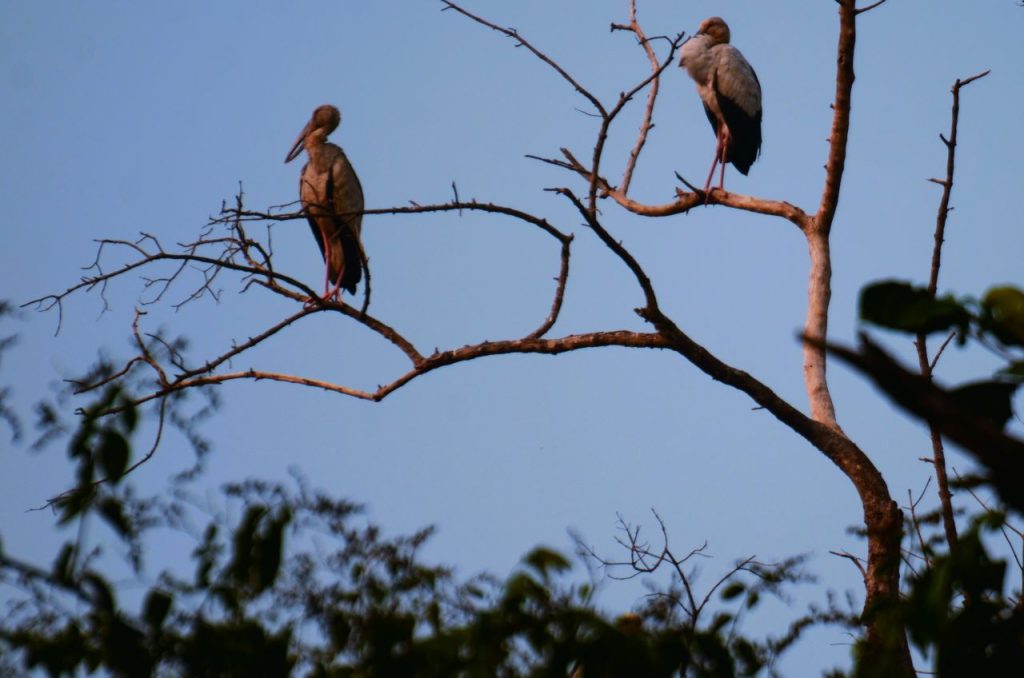
However, there are other activities as well like nature walks and birding trails. With over 280 species of birds you can see a variety of species from woodland birds like the elusive paradise flycatchers to raptors like honey buzzards to water birds like lesser adjutants. Winter is also a great time to see migrants in addition to the residents. There are bird machans built by the forest department and you can use these facilities for a fee.
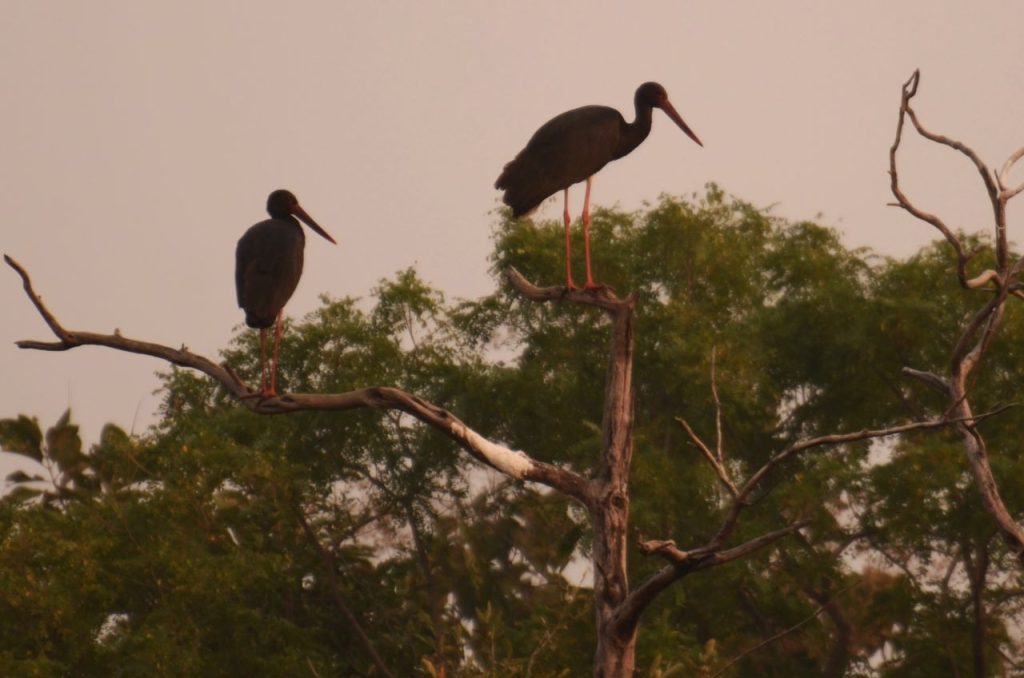
Nature walks need to be accompanied by authorized guides and naturalists and there are specific tracts in the buffer zones. Most resorts like Waghoba Eco Lodge also arrange cycling expeditions as well.
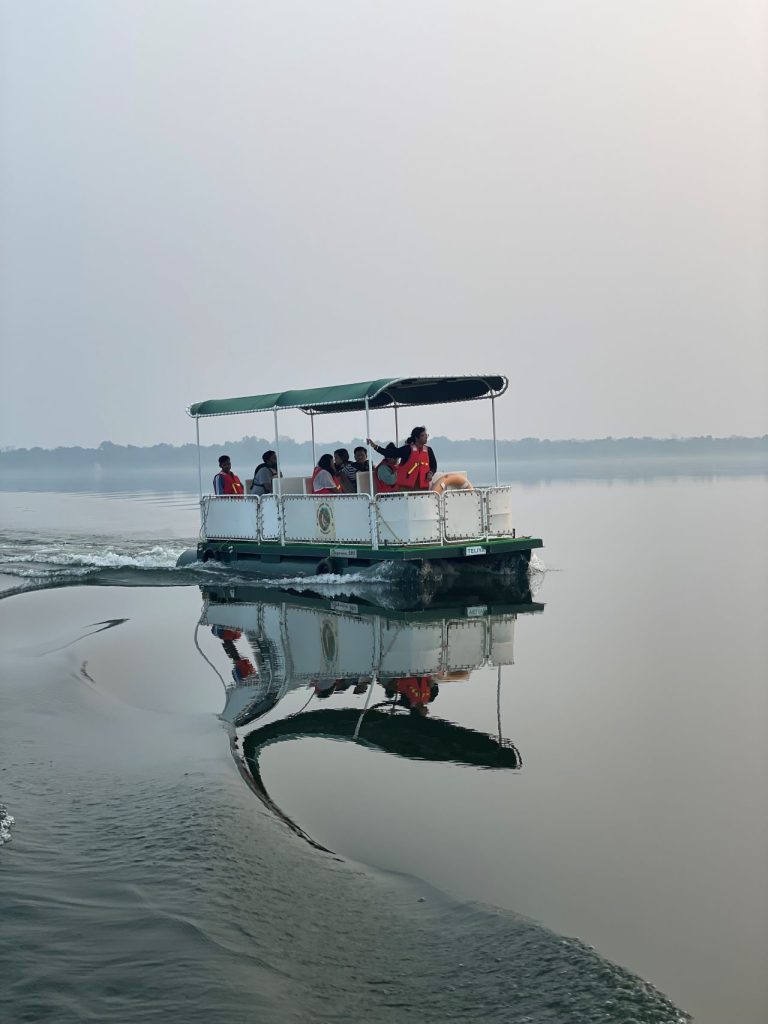
The Irai Dam is a fascinating reservoir and you can go for boating to see birds and crocodiles and if you are lucky can spot a tiger as well swimming in the waters or lying along the banks of the river. If you are feeling a wee bit adventurous spend a night in the log huts built by the forest department in the buffer zones and experience the jungle in the dead of the night. The facilities are clean but basic and there are attached toilets as well. There are also camps inside the forest.
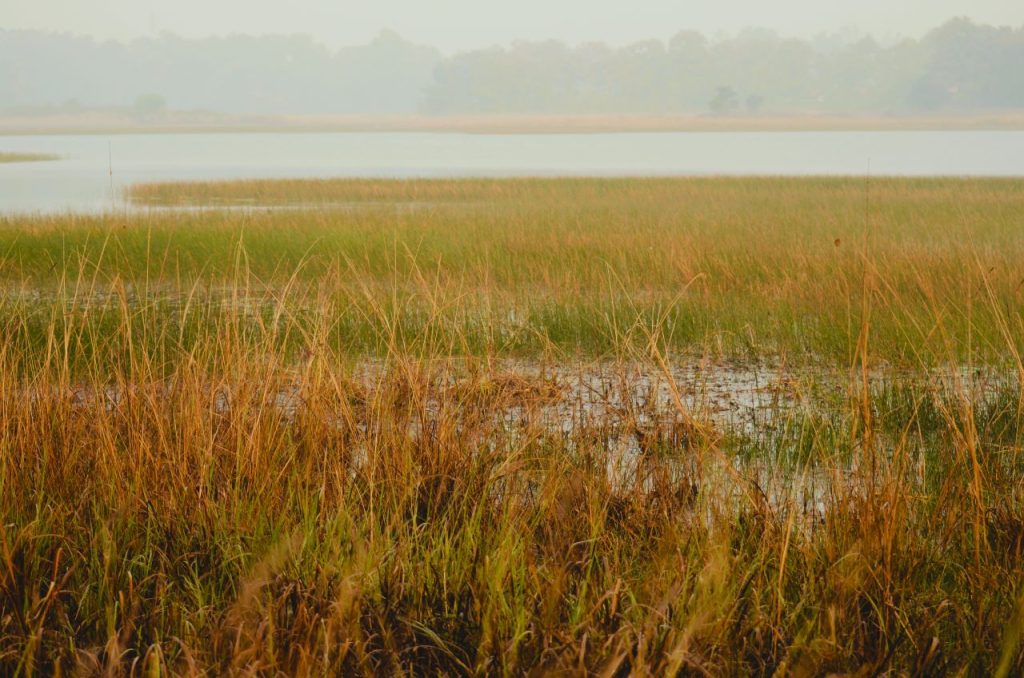
There is also the Agarzari Adventure Park in the Moharli zone where you can try rappelling, ziplining, and other adventurous activities. You can also go kayaking, cycling, and see butterflies and birds.
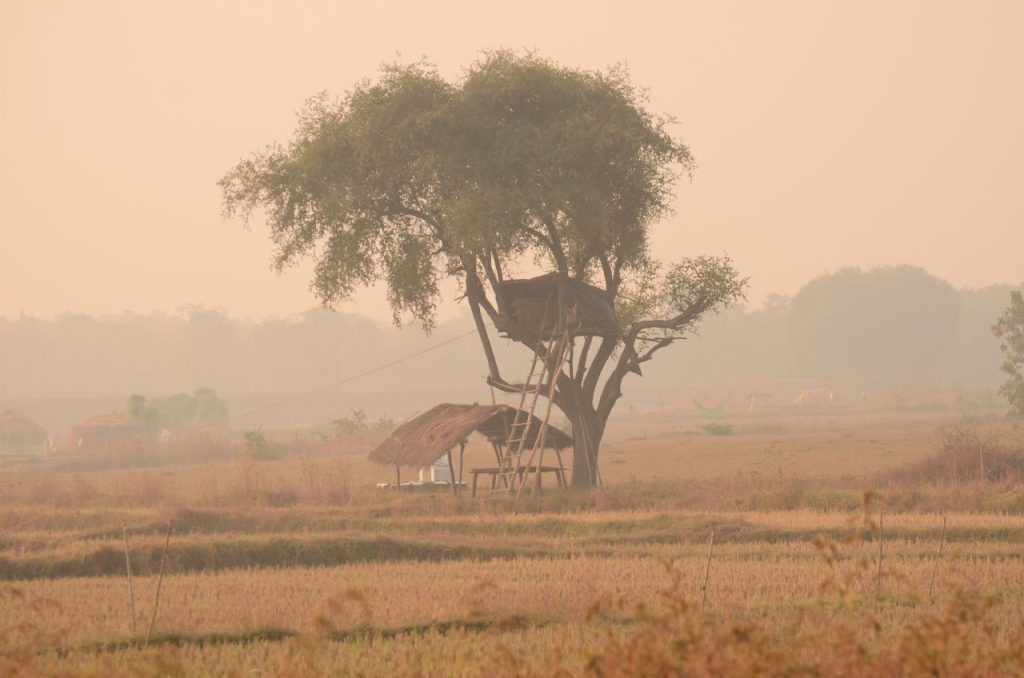
There are also village trails and you can go to temples like Ramdegi Temple located inside the forest. A small shrine to Lord Rama stands here where locals believe that he stayed here during his exile. There are also tribal shrines like the one dedicated to Taru, the martyred tribal chief after who Tadoba is named. You can also see several stone shrines dedicated to Wagoba or the tiger with tridents in the small forests and villages as well. You can also visit Sevagram Gandhi Ashram, set up by Gandhiji where there is a museum as well.
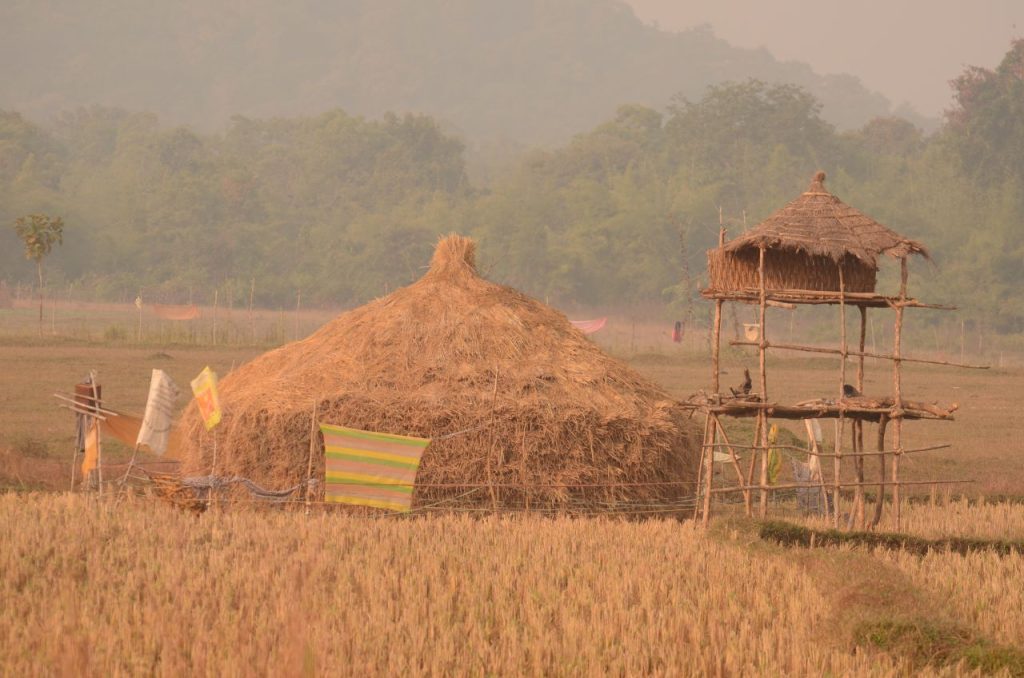
All details regarding various activities are available here or you can ask your resort to book for the same.
Where to stay in Tadoba National Park ?
There are several wildlife lodges, luxury resorts, homestays, and boutique properties in Tadoba National Park and most of them are located near the Moharli gate which is the oldest and most popular gate in the tiger reserve. The forest department and Maharashtra Tourism also have their own guest houses and resorts and camps which are open to the public.

We stayed in Waghoba Eco Lodge by Pugdundee Safaris which is one of the new lodges and is focussed on conservation, sustainability and offers conscious luxury, and is located near the … Gate. The forest department and wildlife lodge has also certified the green lodges which are around the national park which have complied with the wildlife and conservation norms and Waghoba Eco Lodge ranks high in this list as well.
How do I reach Tadoba National Park ?
Tadoba Andhari Tiger Reserve is well connected by road, rail, and air. Nagpur is the closest international airport and there are flights connecting from key Indian cities – be it Mumbai, Delhi, Bangalore, Chennai, Hyderabad, or Kolkata. The distance from Nagpur to Tadoba is roughly around 100 km to Kolara Gate and 150 km to Moharli gate and 130 km to Khutwanda Gate where we were staying at Waghoba Eco Lodge. The eight-lane highway between Nagpur and Hyderabad is perfect for seamless driving and you can reach in less than three hours from the airport, depending on the location of the resort. The closest railhead is at Chandrapur which is about 45 km and it is also well connected to all the major cities in India. It is about one hour by road from Waghoba Eco Lodge while Nagpur Railway Station is about three hours away. Taxis are available at the airport and railway station or your resort can arrange for transfers.
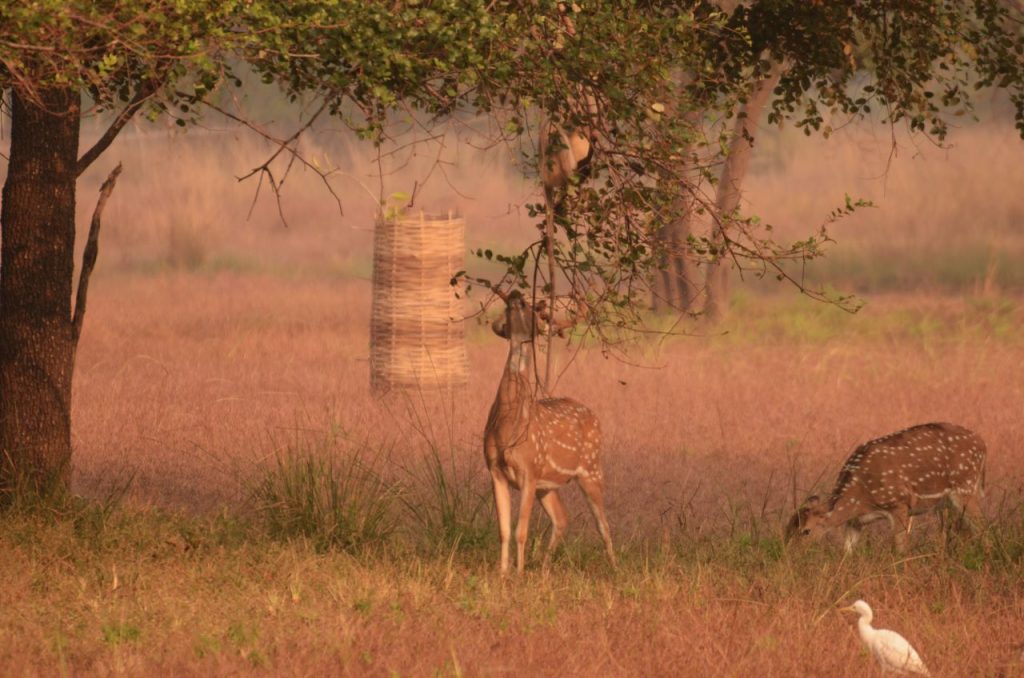
We drove down from Pench Tree Lodge and it took us a little over five hours to get here by road. You can easily plan a visit to both Pench National Park and Tadoba National Park with Pugdundee Safaris and stay in Pench Tree Lodge and Waghoba Eco Lodge respectively.
What is the Best time to visit Tadoba National Park?
The best time to visit Tadoba National Park is just after the monsoons when the park opens in October and the season goes on till May when the tiger sightings are excellent. The weather, however, summer is very hot during peak summer and temperatures can cross 47*C which is approximately 116*F. Waghoba Eco Lodge is focussed on creating conscious luxury and cooler rooms and cottages with local indigenous eco-friendly materials and you can stay here rather comfortably. The park is closed during monsoons from June to September.
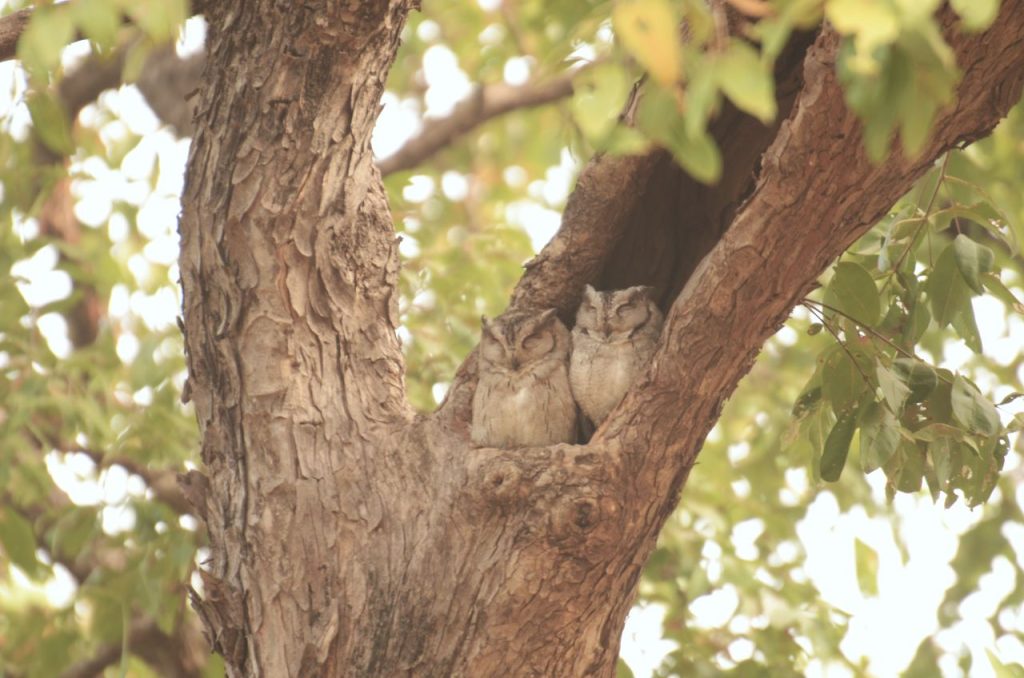
Tadoba Andhari Tiger Reserve is s stunningly beautiful in spring – from February to April when there is a red carpet spread out for you. The Palash or the flame of the forest is in full bloom and the golden blooms of bahava, ( Cassia Fistula) resembling a chandelier along with kumbhi (Careya arborea), and ghogar – dikemali (Gardenia latifolia) are among the other flowering trees. It is also a great time to sight birds and animals as well.
What to wear for safaris in Tadoba
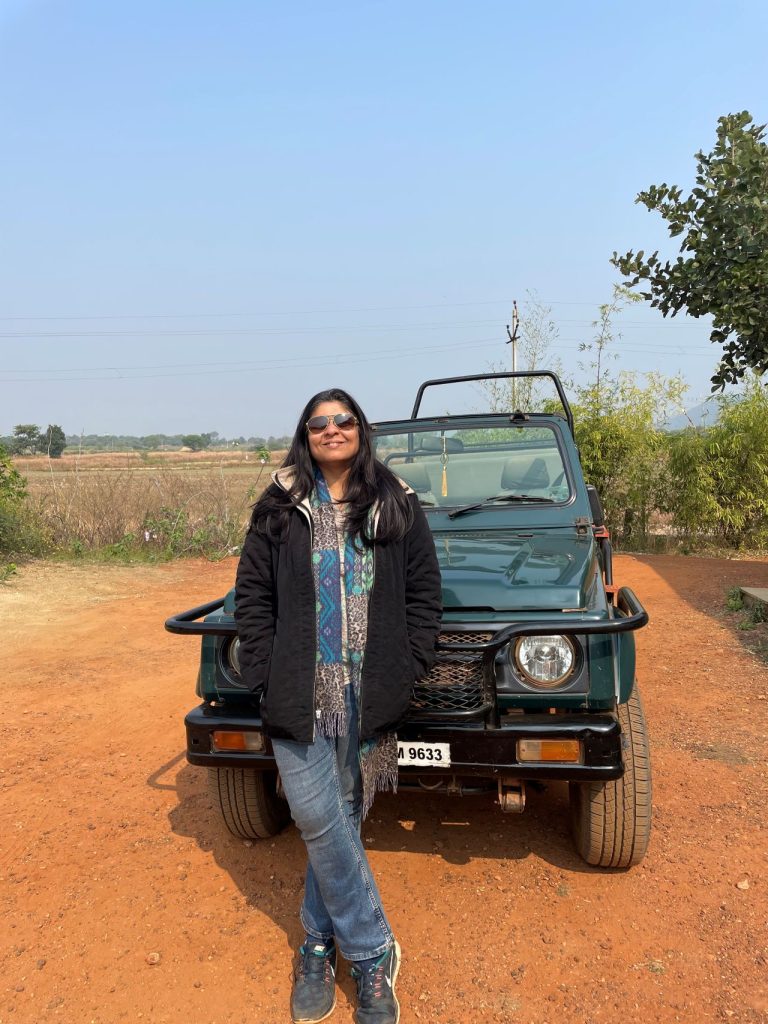
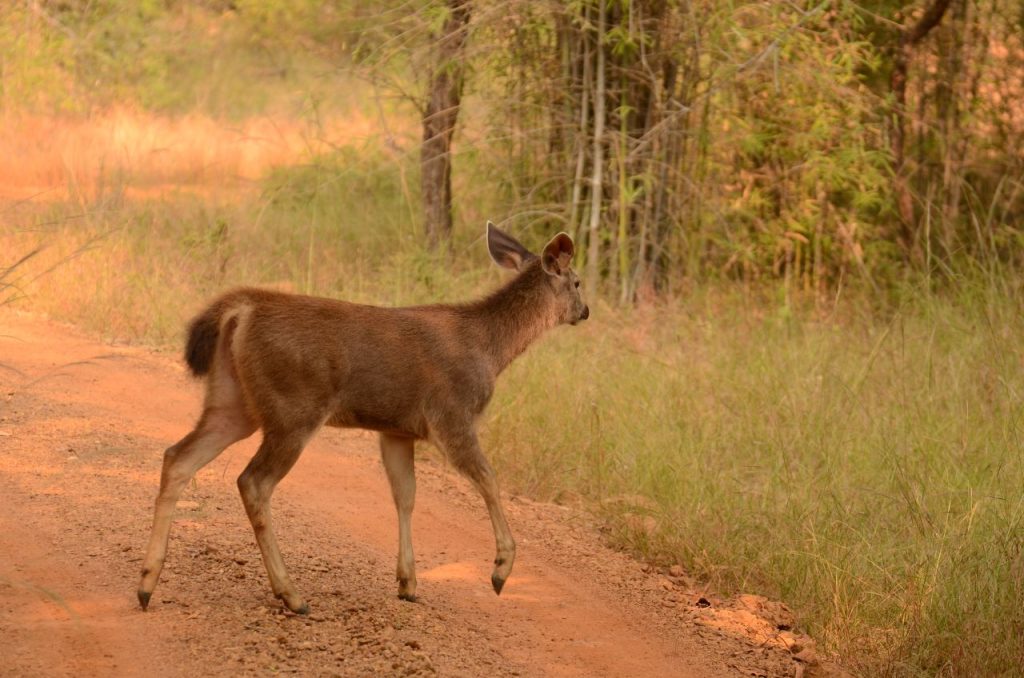
Dos and Donts for Safaris
A simple guide and a checklist for your safaris
Carry your ID- Aadhar, cameras and lenses. Put your phone on silent mode. Pench allows mobiles unlike Tadoba.
Wear neutral and muted colours that can camouflage with the forest hues. NO bright reds or oranges.
Carry your cameras, binoculars and if you are a bird watcher, a bird book as well . Mobiles are not allowed and have to be deposited.
The temperatures are extreme. So if you are visiting in winter as we did, wear adequate winter clothing. Summers are extremely hot and so cover your head and wear light cotton
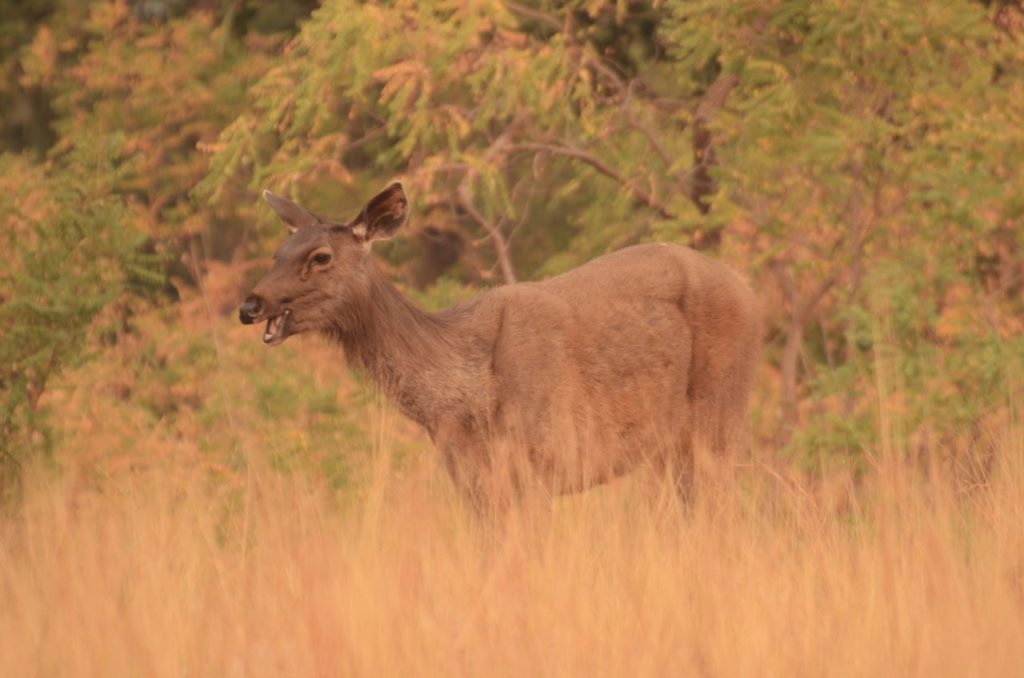
Wear ample sunscreen and carry a bottle of water. Drink plenty of water and keep hydrating yourself in summer.
If you are going on a walking trail, ensure that you wear good walking shoes as well
Be careful while taking photos and don’t get close to the animals.
Please do not throw your thrash or litter the National Park
There are designated areas to have breakfast for all the jeep safaris
Toilets are available in designated areas as well.
Alcohol and smoking are strictly not permitted in the National Park and Wildlife Sanctuaries
Most importantly, maintain silence and don’t get off the jeep unless you are on an authorized walking trail or cycling route, and listen to your guide.
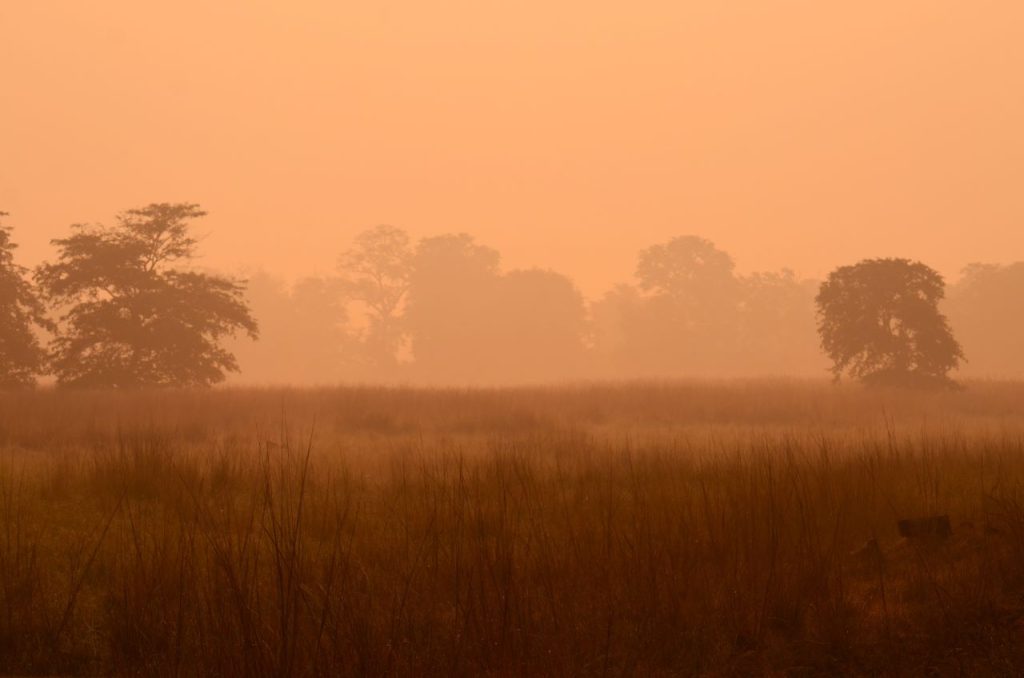
Sustainability in Tadoba National Park
One of the good things that I noticed is that local villagers who are staying in the buffer zones and other villages around the national park have been employed in the national park and are trained as guides, naturalists, and drivers. There were many women naturalists and guides and we even had them on the night safari or on boat rides on the Irai Dam. There have been efforts to train and offer equal opportunities for both men and women and invariably you will find both husband and wife working together in the national park or sometimes even a brother and sister. Jeep safaris are allocated to tourists based on the roster system at every gate and zone so that everyone gets a turn. There are also alternative livelihoods provided to the local villagers and most of them are now protecting the forest as well. Many local villagers are also working in the resorts and lodges as well in different capacities.
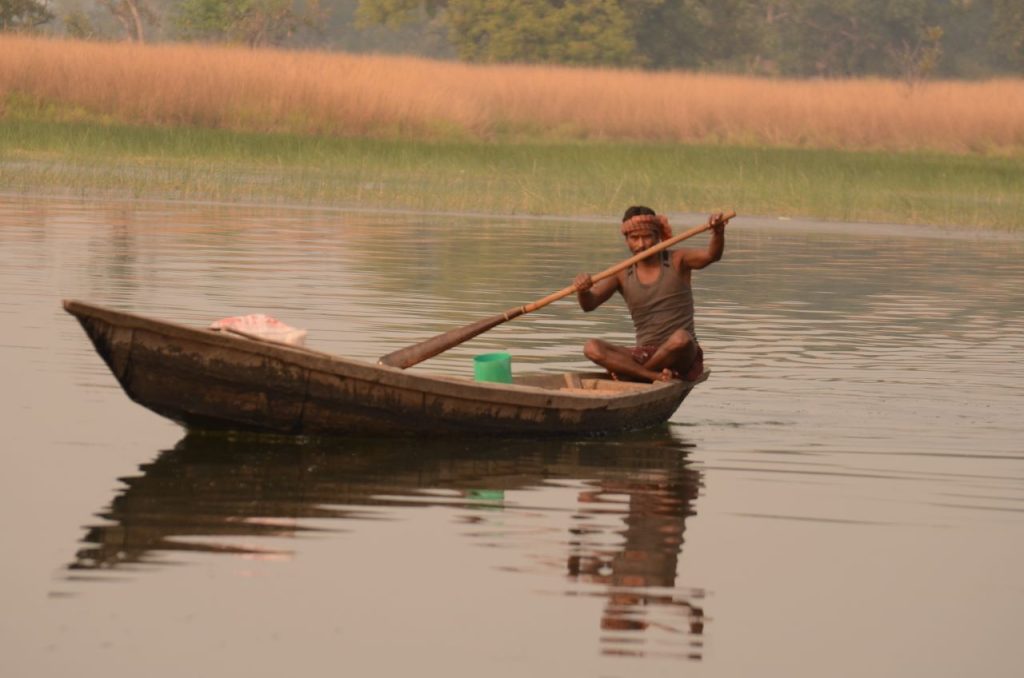
However tourism can always be a double-edged sword and if not regulated, can lead to several issues from waste management to lack of conservation and safety issues.
FAQs on Tadoba
Is Tadoba better than Pench ?
Both Pench National Park and Tadoba Tiger Reserve are special in their own ways and each wildlife park offers an exclusive experience. You can read about Pench National Park – A Complete Travel Guide here.
Are mobile phones allowed in Tadoba ?
No, mobile phones are banned in Tadoba. You have to deposit them in a locker in your jeep and can take them only after the safari is complete.
Is a camera allowed in Tadoba ?
Cameras are allowed in Tadoba but you will have to pay Rs 250 for each camera. Mobile phones are banned.
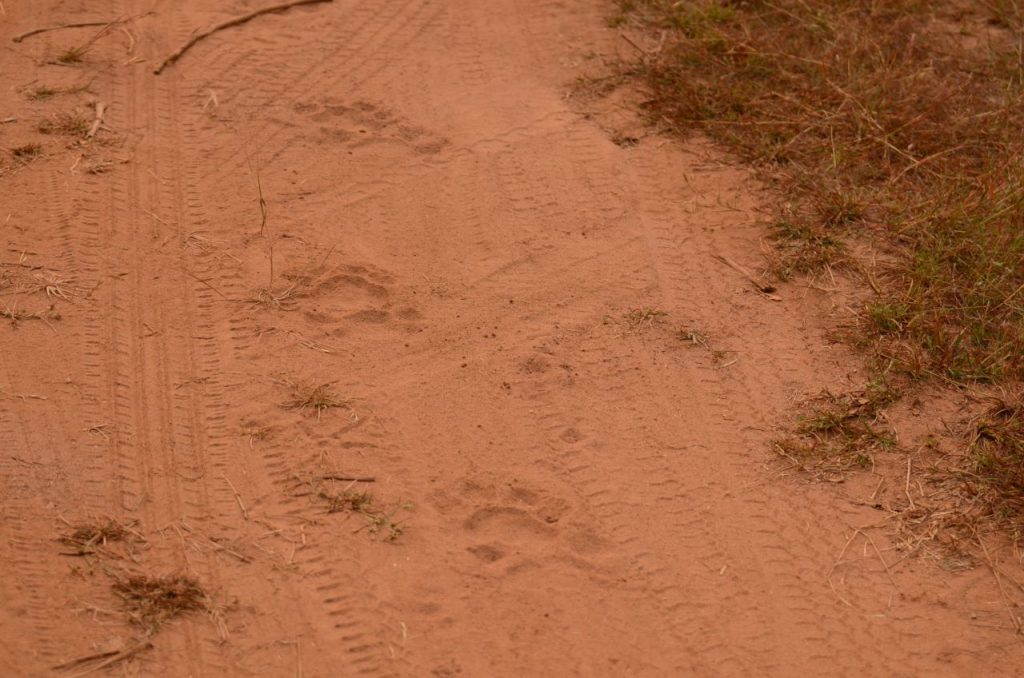
Which safari is best in Tadoba ?
The Mohurli Zone in Tadoba is one of the best for tiger and wildlife sightings, but Khutwanda Gate has also given us generous sightings of tigers and other mammals.
How many safaris are enough in Tadoba ?
Spend a minimum of three nights in Tadoba and you can plan at least three safaris here including a night safari. You can even do two safaris in a day
Is there a night safari in Tadoba ?
Yes there is a night safari in Tadoba and it is done only in the buffer zone through the Junona Gate. The gate is about 45 minutes from Waghoba Eco Lodge
Which month is Tadoba closed ?
Tadoba is closed in the months of monsoon from June to October every year , however, buffer zones may be open and you will have to check the same with your resort. There is also a weekly holiday on Tuesdays and do plan your trip accordingly.
